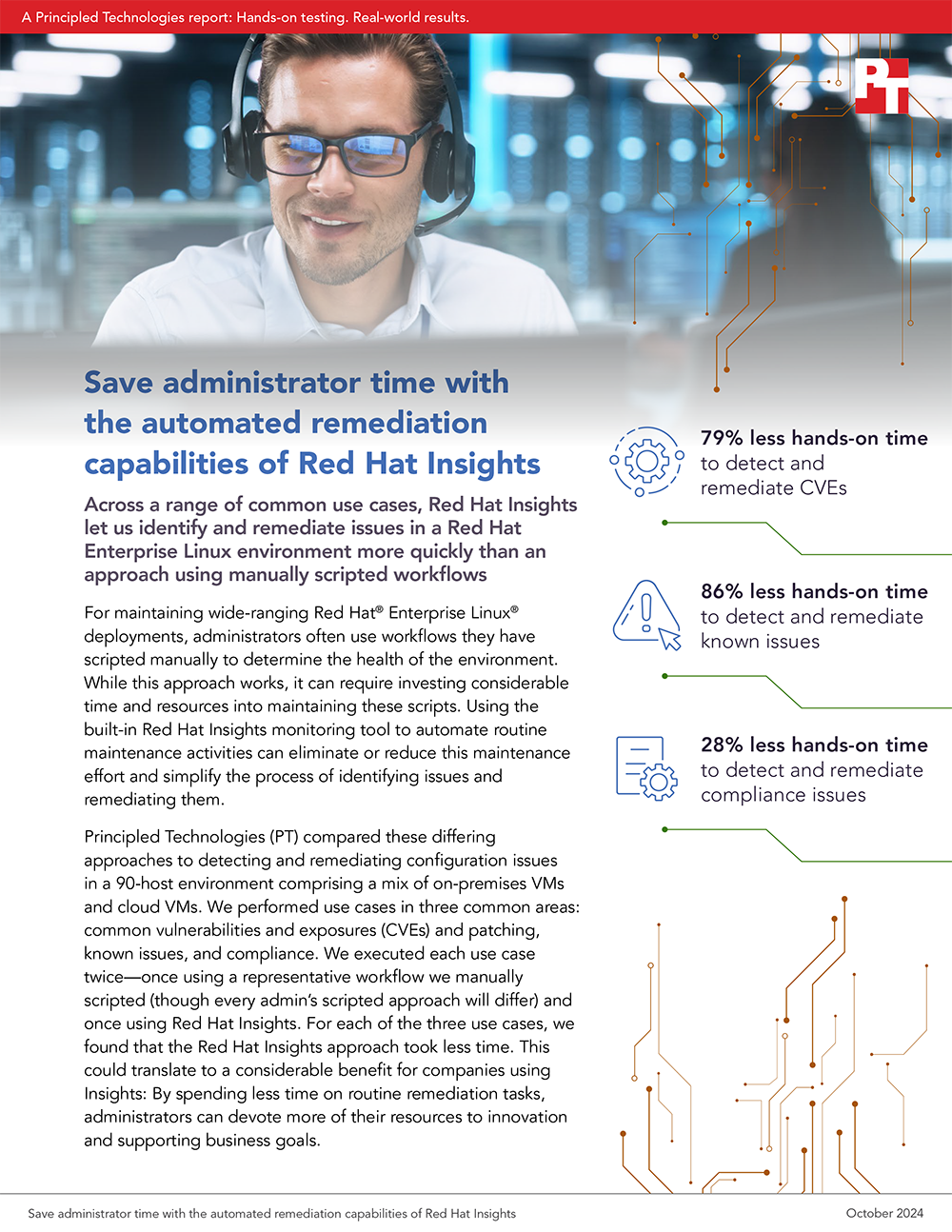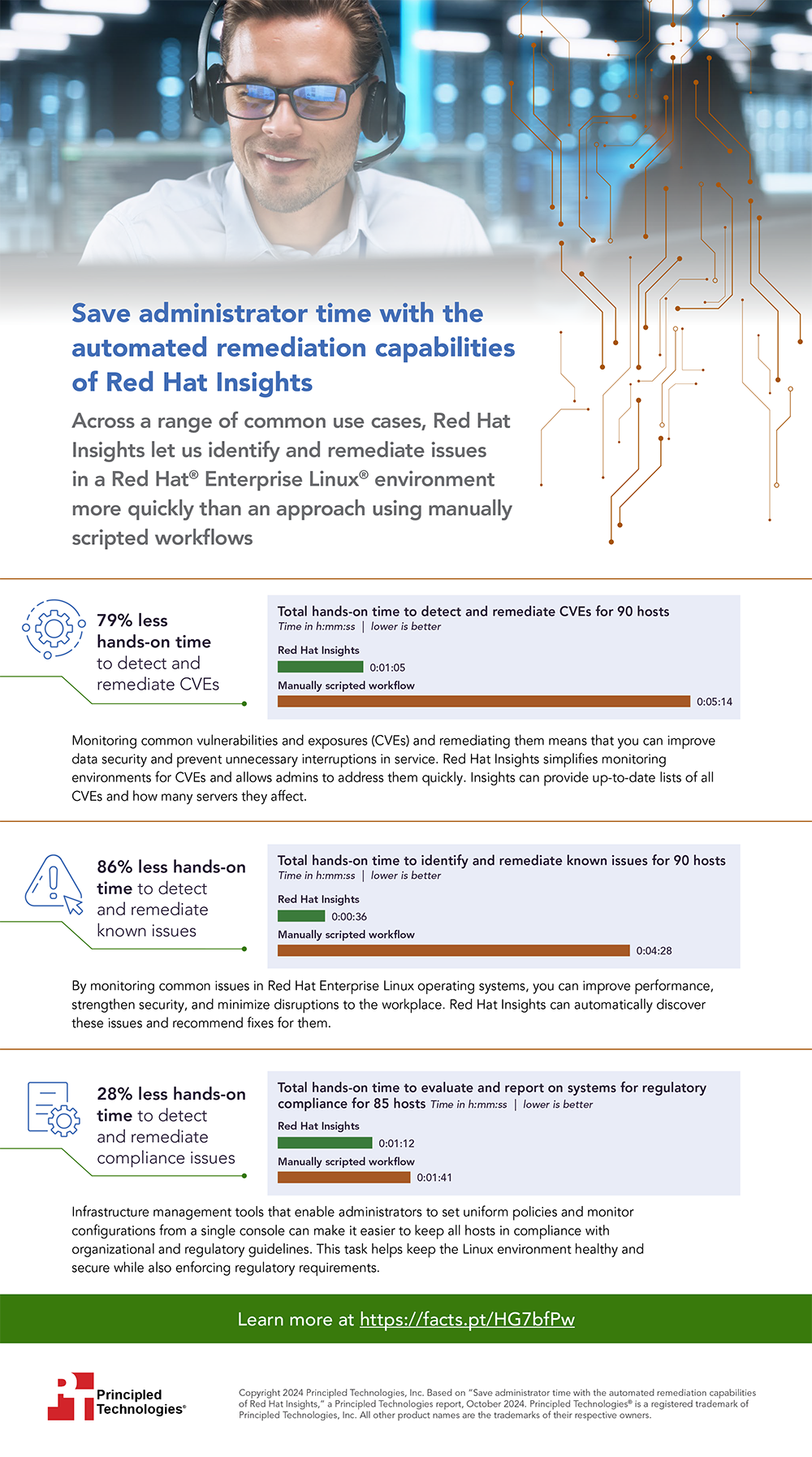
Experienced IT administrators know that even in environments with industry-leading best practices and state-of-the-art infrastructure, the dynamic nature of technology ensures that potentially costly problems can pop up at any time. Top-notch admins often develop scripted workflows to proactively monitor the health of their systems and anticipate issues before those problems can cause operational interruptions or costly downtime, but maintaining those scripts can require a significant investment of hands-on time and resources. Admins who work with Red Hat Enterprise Linux (RHEL) deployments have at their disposal an alternative to manual scripting—Red Hat Insights. RHEL provides built-in Red Hat Insights tools at no extra cost to help users quickly find and fix security, performance, and compliance problems in their on-premises or cloud environments.
To see how much time admins could save by using Red Hat Insights instead of manual scripting for issue detection and remediation, we compared both approaches in a 90-host RHEL environment with a mix of on-premises VMs and cloud VMs. With both approaches, we tested use cases in three areas: common vulnerabilities and exposures (CVEs) and patching, identifying and remediating known issues, and compliance. For the manual script approach, we recorded how long it took our experienced administrator to write scripts for detecting, reviewing, and remediating issues on all hosts. For the Red Hat Insights approach, we tracked the time it took for our admin to configure Insights to perform the same tasks on all hosts.
We found that the Red Hat Insights approach took less time than the manual scripting approach for each of the three use cases—including wins of up to 79 percent less time to detect and remediate CVEs and up to 86 percent less time to detect and remediate compliance issues. Those types of time savings could translate to considerable benefits for companies that use Red Hat Insights—allowing their administrators to spend less time on routine detection and remediation tasks and to devote more of their resources to innovative projects.
To learn more about the potential advantages of using Red Hat Insights for automated monitoring and remediation, check out the report and infographic below.
Principled Technologies is more than a name: Those two words power all we do. Our principles are our north star, determining the way we work with you, treat our staff, and run our business. And in every area, technologies drive our business, inspire us to innovate, and remind us that new approaches are always possible.







